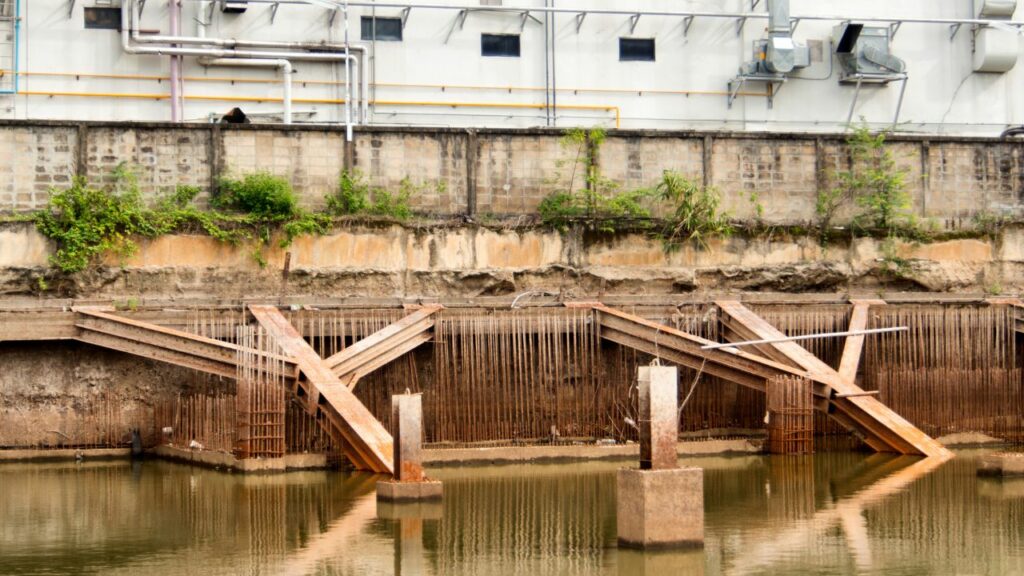If we look at human history, we have developed solutions to challenges in our environment that were previously impossible. We have learned to construct bridges to facilitate marine travel. We also learned to build tunnels to make our way more accessible in the mountains. The people who came up with such ideas and put them to practice are known as civil engineers.
Civil engineering and structural engineering are two closely related but distinct fields, and you might confuse them with each other. Considering the fact that they have many similarities, one should recognize the significant differences in their roles, skill set, and responsibilities. At the end of this article, you will be able to differentiate between civil engineering and structural engineering. Also, we will help you decide which of these is the best fit for your career.
Civil Engineer vs. Structural Engineer
For you to understand the distinct and similar features easily, we have made a table so you can get an overview of both fields:
| Factors | Civil engineer | Structural engineer |
| Educational requirements | A Bachelor’s or Master’s Degree in Civil Engineering | Bachelor’s or Master’s Degree in Structural Engineering |
| Area of focus | Design, construction, and maintenance of infrastructure | Design and analysis of structures |
| Typical Work Environments | offices, construction sites, and government agencies | Offices, construction sites, and laboratories |
| Responsibilities | Project management, site inspections, and team coordination | Design and analysis of structural components |
| Skills required | Mathematics, physics, problem-solving, communication, and teamwork | Mathematics, physics, and problem-solving |
| Licence requirements | Professional Engineering (PE) License | Professional Engineering (PE) License |
Civil Engineering vs. Structural Engineering
Civil engineering is considered one of the old engineering fields. Its origins can be traced back to when people first started constructing homes for themselves in antiquity. Civil engineering is a universal field that incorporates designing, constructing, and maintaining infrastructure, including roads, bridges, tunnels, airports, and water systems.
On the other hand, structural engineering covers the areas of analyzing and designing different structures and buildings. Both of these fields require the use of engineering principles, methods, and tools.
However, both fields are quite different when it comes to their applications and requirements.
What Kind of Projects Do Civil Engineers Work On?

The coordination and overall site design are frequently the responsibility of civil engineers. Many projects involve the consultation and analysis from civil engineers, such as
- Construction of roads
- Railways
- Dams and reservoirs
- Buildings
- Sewage Systems treatment
- Bridges construction,
- Water treatment systems
- Traffic studies
- Stabilization of streambanks
- Pipelines
- Airports, etc.
Projects that Structural Engineers Work On
Typically, structural engineers are consulted when required to authorize materials for a design or assist in resolving a structural issue. You will find them working on such types of projects:
- Deep foundations,
- Beams,
- Support systems
- Girders
- Rafters
- Retaining walls,
- Shear walls
- Making renovations,
- Structure of water treatment plants
- Columns
- Trusses
Why are Civil Engineering and Structural Engineering Considered the Same?
Civil engineering and structural engineering are considered the same because there lie some similarities between them, such as
- Both fields require the technical expertise of mathematics, physics, and engineering principles.
- The use of computer-aided design (CAD) software, including other advanced tools and technologies, is common in both fields.
- Excellent communication, analytical skills, and problem-solving skills are required in civil engineering as well as structural engineering.
Differences between Civil Engineering and Structural Engineering

Now, if we talk about what makes these two fields distinct and different from one another, here are the few points listed for you:
- If we talk about a project, structural engineers are only involved in the design and analysis phase. Whereas civil engineers take part in all phases of the projects, including the planning and design to structure and maintenance. Civil engineers typically work on large-scale projects involving multiple structures and infrastructure components. However, structural engineers are focused on individual structures and their performance.
- Civil engineers consider a wide range of factors, such as environmental impact, sustainability, and public safety, while working. Civil engineers need to work with other professionals as well, such as architects and other engineers. All of them work together as a team and complete the project to ensure its safety and success.
- Alternatively, structural engineers primarily focus on structural integrity and safety. Structural engineers work with architects to ensure that the building or the structure can withstand heavy loads and stresses. This includes wind, earthquakes, gravity, and many other external factors. Also, they work on renovations and repairs of existing buildings and structures.
Things You Learn When Pursuing a Civil Engineering Degree
As a civil engineer, you will have a direct impact on the infrastructure and shape of the human world. They include the towns and cities where people reside, as well as the bridges that span rivers and the sea. In the course of your studies, you will acquire a variety of technical skills and information that are appreciated in a variety of industries, including construction and real estate.
You will learn how to properly plan, produce, and manage the construction of structures while utilizing your resources and budget to the fullest. Your studies will provide you with expertise in fields like engineering mechanics, material science, and mathematical computation.
Also, you will spend time using computer simulations and models to comprehend engineering concepts and create digital replicas of structures.
Things You Learn When Pursuing a Structural Engineering Degree
As a structural engineer, you will gain knowledge of the characteristics of various building materials such as wood or concrete, etc. You will learn how these materials function under various environmental factors, such as temperature, air pressure, and weather.
Also, you will learn about the various factors, such as landscape, wind, water, and traffic density, that may compromise the structural integrity of built infrastructure.
Type of Work a Civil Engineer Does On Site

Site Analysis
The first thing a civil engineer does on-site is analysis. This process includes soil testing, grade requirements, stormwater patterns, and the actual construction process.
Feasibility Assessments
Civil engineers do feasibility assessments following site analysis. A feasibility assessment evaluates the site to determine whether the project is even practical and whether any site cleanup will be required before the construction can be done.
Sometimes, a feasibility study will provide solutions for improving the site so construction engineer can proceed successfully and safely. Sometimes, a feasibility study may reveal that the project’s site is unsuitable.
In this stage of the pre-design process, civil engineers also supply cost estimates for building projects because the feasibility of a project directly affects the project’s cost.
Material Selection
The materials used also have an impact on project costs. The project owner can choose from a variety of materials that will work for the project, thanks to the material proposals that civil engineers usually supply.
Documentation
Construction documents are created by civil engineers in collaboration with a large team that includes an architect, contractor, structural engineer, etc.
Type of Work A Structural Engineer Does On Site

Evaluation of Construction Material
One of the most important tasks of a structural engineer is to evaluate the material that will be used for construction by the construction engineer. These materials include concrete, steel, cement, etc. Doing this ensures that every material can safely support the load it was designed to carry.
Construction Codes and Implementation
In an existing building structure, if there is damage or failure, a structural engineer evaluates it and provides a solution. If the given solution fulfills the safety standards, then the damaged part is repaired. Otherwise, it is reconstructed from scratch.
Management of Demolition
Along with handling all these things, structural engineers also work on demolition. Because demolishing a structure is as challenging as building a new one.
Documentation
Along with civil engineers, structural engineers work side by side to make documentation of the whole process. After that, these documents are submitted for building permits.
Frequently Asked Questions
Is license necessary for a structural engineer to work on professional projects?
Yes, structural engineers must be licensed to start practicing. This license is named a Professional Engineering (PE) license. Requirements for the license can vary from country to country, but it typically involves giving a written exam and fulfilling the educational and experience requirements.
What are the skills required to be a civil engineer?
Civil engineer must be very good at subjects like materials sciences, mathematics, and physics. They need to be very good communicators and should be efficient problem solvers.
What skills are required for a structural engineer?
Deep knowledge of mathematics, physics, and materials science are prerequisites for structural engineers. Moreover, they must be quick to solve any problem on the site and should pay keen attention to little details to ensure the success of complex structures.
What kind of work environment can civil engineers work in?
Work environments for civil engineers include offices, building sites, and governmental organizations. According to the nature and site of the project, engineers are required to travel to different places and face all kinds of weathering conditions.
What are the employment prospects for civil engineers?
The need for civil engineers is anticipated to increase as infrastructure development, and maintenance initiatives continue. There is always a need for civil engineers all around the county for different projects. From 2019 through 2029, the Department of Labor Statistics predicts a 2% increase in employment for civil engineers.
What are the employment prospects for structural engineers?
As demand for new buildings and restorations of old structures rises, structural engineers’ employment prospects are also anticipated to improve. From 2019 to 2029, the Department of Labor Statistics predicts an 8% increase in employment for civil engineers.
What kind of work environment can structural engineers work in?
Similar work settings to that of civil engineers include offices and construction sites for structural engineers. Also, they could employ specialized software in laboratories to study and create structures.
Do you classify structural engineering as civil engineering?
Structural engineering is a small part of civil engineering and is a completely different field on its own. The first distinction is that all structural engineers are also civil engineers, but not all civil engineers are also structural engineers. There are many similarities between both fields, and most people get confused.
Read More: Structural Engineer in Northern Suburbs
Conclusion
While structural engineering and civil engineering are closely related, they also differ significantly from one another. Civil engineers concentrate on infrastructure and project management, whereas structural engineers concentrate on evaluating and designing structures. Both occupations demand technical proficiency and a thorough understanding of engineering principles. Selecting the appropriate field based on personal interests and professional objectives is critical. Individuals can contribute to the creation and care of architectural design by choosing their job options wisely by comprehending the contrasts between the two professions.





